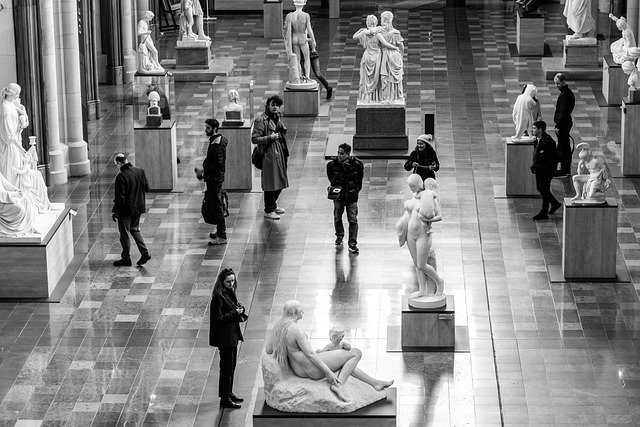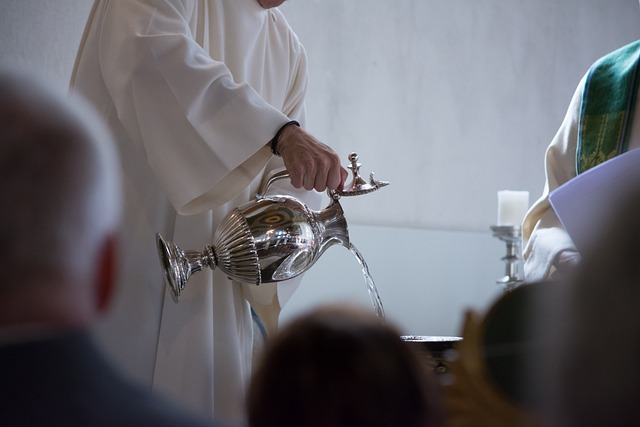The Sacred Gaze: Exploring the Power of the Sacramental Viewer in Religious Rituals
In every corner of the world, religious rituals have been a powerful bridge connecting humanity to the divine. Whether through prayer, meditation, or ceremonial acts, these practices allow individuals to experience moments of transcendence. A central feature of many religious rituals is the sacramental viewer—a concept that captures not only the act of observing but also the profound emotional and spiritual connections that arise when one engages with sacred elements.
The sacramental viewer embodies a transformative perspective: one that sees beyond the physical realm into deeper spiritual realities. This perspective allows devotees to interact with symbols, objects, and rites in ways that reveal their significance. From the flickering candles in a church to the intricate mandalas in Eastern traditions, the act of viewing becomes an invitation into a landscape rich with meaning and insight.
The Power of Observation in Rituals
Throughout history, rituals have depended on the sacramental viewer to elevate the simple act of watching into a profound experience. This process begins with intention—the desire to seek a connection with the divine. Each glance, each attentive gaze, becomes a prayer in itself, where participants are called to engage not only their sight but also their hearts and minds.
For instance, during a sacred ceremony, the sacramental viewer perceives the smoke of incense rising as a metaphor for their prayers ascending to the heavens. This observation transforms a mere sensory experience into a spiritual journey, evoking feelings of hope, longing, and devotion. The ritual’s power lies in the way it reshapes our understanding of the world, where every flicker of light or rustle of fabric can carry profound spiritual significance.
Cultural Variations of the Sacramental Viewer
Across cultures and faiths, the sacramental viewer manifests in unique ways. In Christianity, the Eucharist invites participants to behold the elements of bread and wine, which symbolizes a deeper communion with Christ. In Hinduism, offerings made to deities are seen through the sacramental viewer by devotees who believe that their gaze can invoke blessings and transcendence. Each tradition weaves a rich tapestry of meanings, uniting communities in shared recognition of the sacred within the everyday.
The Emotional Resonance of Rituals
The practice of engaging as a sacramental viewer transforms emotional landscapes, allowing participants to confront their innermost feelings. The communal experience of rituals can evoke a profound sense of belonging and connectedness, reminding individuals that they are part of something larger than themselves. This emotional resonance encourages individuals to open their hearts, fostering compassion and empathy in spaces that may otherwise feel isolating.
In times of personal grief or collective turmoil, the act of being a sacramental viewer within rituals can heal. Observing a memorial service or participating in community prayers provides an emotional anchor, granting solace and a feeling of unity. The gaze shared among participants becomes a silent acknowledgment of shared struggles and hopes.
Inviting the Sacred into Daily Life
Embracing the role of the sacramental viewer is not limited to formal rituals; it can be woven into the fabric of everyday life. Moments of reflection, gratitude, or mindful observation in daily routines can transform mundane activities into sacred rituals. Whether it’s pausing to appreciate a sunset, engaging in daily meditative practices, or partaking in family traditions, each moment offers an opportunity to become a sacramental viewer, enriching the soul and nurturing a deeper spiritual connection.
The sacred gaze, encapsulated by the sacramental viewer, invites us to explore the depths of our spirituality. Through observation, participation, and emotional resonance, we engage with the divine in ways that affirm our humanity. As we continue to examine the power of rituals across different cultures, may we cultivate a genuine sense of wonder and connection that allows the sacred to flourish within and around us.



